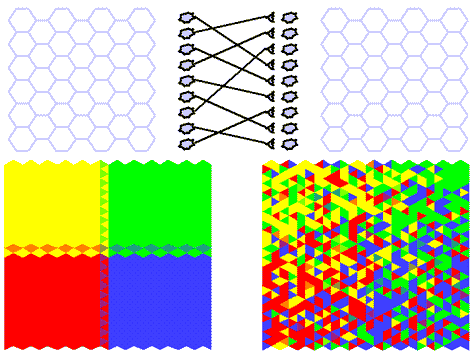Learning - Growing circuits
The genome's billion (10^9) bits cannot specify where each synapse in the brain goes—a hundred million times more bits are required to list the quadrillion (10^15) connections among the brain's trillion (10^12) neurons. The problem that computer architects worry about—how to use the trillion (10^12) transistors that fit on a silicon wafer—pales in comparison.
Having exhausted all information available in the genome, neural circuits customize themselves through internal and external interaction, a learning process known as epigenesis.
Models of epigenesis have demonstrated that the brain's feature maps can be built simply by wiring together neurons that fire together: Light- and dark-sensitive inputs from the retina wire together to produce orientation-tuned cells; left- and right-eye inputs produce depth-tuned cells; lagged and nonlagged inputs produce (motion) direction-tuned cells.
Emulating epigenesis could allow engineers to build more complex systems.
As a chip's metal wires cannot grow, we developed softwires—virtual connections that do not require point-to-point wiring. A softwire is routed to its target by a silicon growth-cone, a model of the motile structure that tows a growing axon along a chemical trail.
